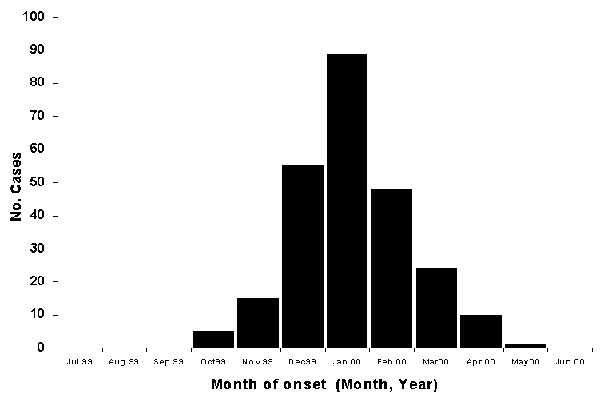Volume 8, Number 1—January 2002
Research
Tularemia Outbreak Investigation in Kosovo: Case Control and Environmental Studies
Figure 3

Figure 3. Epidemic curve of laboratory-confirmed tularemia cases (n = 247) in Kosovo, by month of onset of symptoms, October 1999- May 2000.
Page created: July 14, 2010
Page updated: July 14, 2010
Page reviewed: July 14, 2010
The conclusions, findings, and opinions expressed by authors contributing to this journal do not necessarily reflect the official position of the U.S. Department of Health and Human Services, the Public Health Service, the Centers for Disease Control and Prevention, or the authors' affiliated institutions. Use of trade names is for identification only and does not imply endorsement by any of the groups named above.